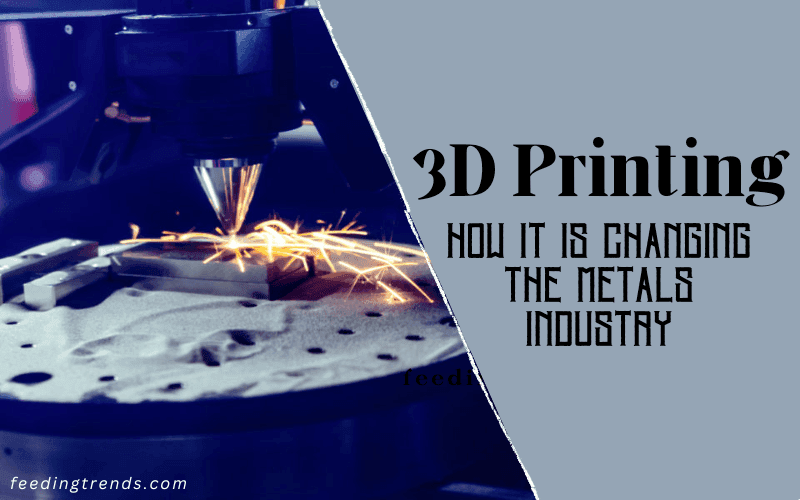
3d Printing: How It Is Changing the Metals Industry
The technique of 3D printing metal parts differs significantly from traditional metalworking methods. Rather than utilizing cutting, moulding, and hammering metal sheets, a 3D printer seems to produce the desired shape out of nowhere. This means that 3D printing has the potential to revolutionize a thousand-year-old, tried-and-tested practice, which may require a new, comprehensive approach to metalworking.
The metal 3D printing process is classified as an additive manufacturing process, which entails creating a shape out of specialized powder. The customized shape is then printed, and the resulting part goes through a debinding and sintering process. During the debinding stage, the binding substance is washed away from the freshly printed component, which is then sintered by heating the metal to make it denser.
Since 3D printing generates less waste and enables more intricate designs, its impact on the metals industry is significant. Later in this article, we'll go into more detail about how 3D printing can transform the industry.
The Current Market's Place For 3D Printing
Currently, the most suitable application of 3D printing in the industry is in research and development. Metal 3D printing is particularly useful in this area due to its short value chain, which we will discuss in detail later. By creating designs and prototypes, product managers and designers can use 3D printing to rapidly speed up product development, leading to better mass-produced metal goods. However, 3D metal printing is not yet ideal for long production runs.
Despite its promising innovation, the 3D printing process still has some drawbacks. For example, 3D printing cannot match the rigidity of traditionally crafted metal parts. This is due to the creation of a structure from metal powder, resulting in a more porous final result. As a result, a printed metal part will be more susceptible to cracks and stress than one that is traditionally milled.
Moreover, 3D metal printers are expensive, and 3D printing is significantly slower than using custom moulds. As previously stated, 3D printing is not suitable for long production runs.
However, if 3D printing technologies can overcome these obstacles, they have the potential to revolutionize the way we manufacture metal goods.
3D Metal Printing Techniques
The process of additive manufacturing offers various methods, and one of them is selective laser sintering, which involves using a laser beam to heat metal powder and creates each layer until the final three-dimensional model is formed.
This is also called the powder bed fusion technique as it employs a powder bed to produce the model. Another method is the direct energy deposition technique, which operates similarly to an ice cream machine. A guided nozzle is used to print the metal powder layer by layer to produce the final three-dimensional model.
The Most Important Advantages of 3D Printing
No matter which method is used, 3D printing offers three major benefits:
There is low wastage in the 3D printing process compared to traditional methods that produce a lot of waste due to cutting and sanding. 3D printing only uses the metal powder that is needed and unused powder can be heated for another 3D model. This increases yield and maximizes raw material spending.
3D metal printing allows for the creation of more complex designs with precision. The layer-by-layer production process allows for the creation of hollow materials and lighter-weight parts, which are difficult to achieve with milling.
The 3D printing process has a shorter value chain, which means fewer markups and shorter turnaround times. This is because 3D printing only involves atomizing metal, printing the shape, and debinding and sintering the shape, whereas traditional subtractive manufacturing involves cutting and assembling parts, and often requires moulds. Therefore, 3D printing is ideal for prototyping, research and development, and short production runs.
Final Thoughts
While 3D printing offers many advantages for the metals industry, such as reduced waste, the ability to create complex designs, and a shorter value chain, there are also significant drawbacks to the process. One of the biggest challenges is the high cost of 3D printers, which can be prohibitive for some businesses. Additionally, 3D printing is not as efficient as traditional manufacturing methods for producing large quantities of parts. Furthermore, the strength of 3D-printed parts may be questionable, and traditional manufacturing methods still offer more cost-effective solutions for certain applications. Despite these challenges, with further development and innovation, 3D printing has the potential to transform the metals industry and revolutionize the way metal goods are produced in all industries.
Appreciate the creator